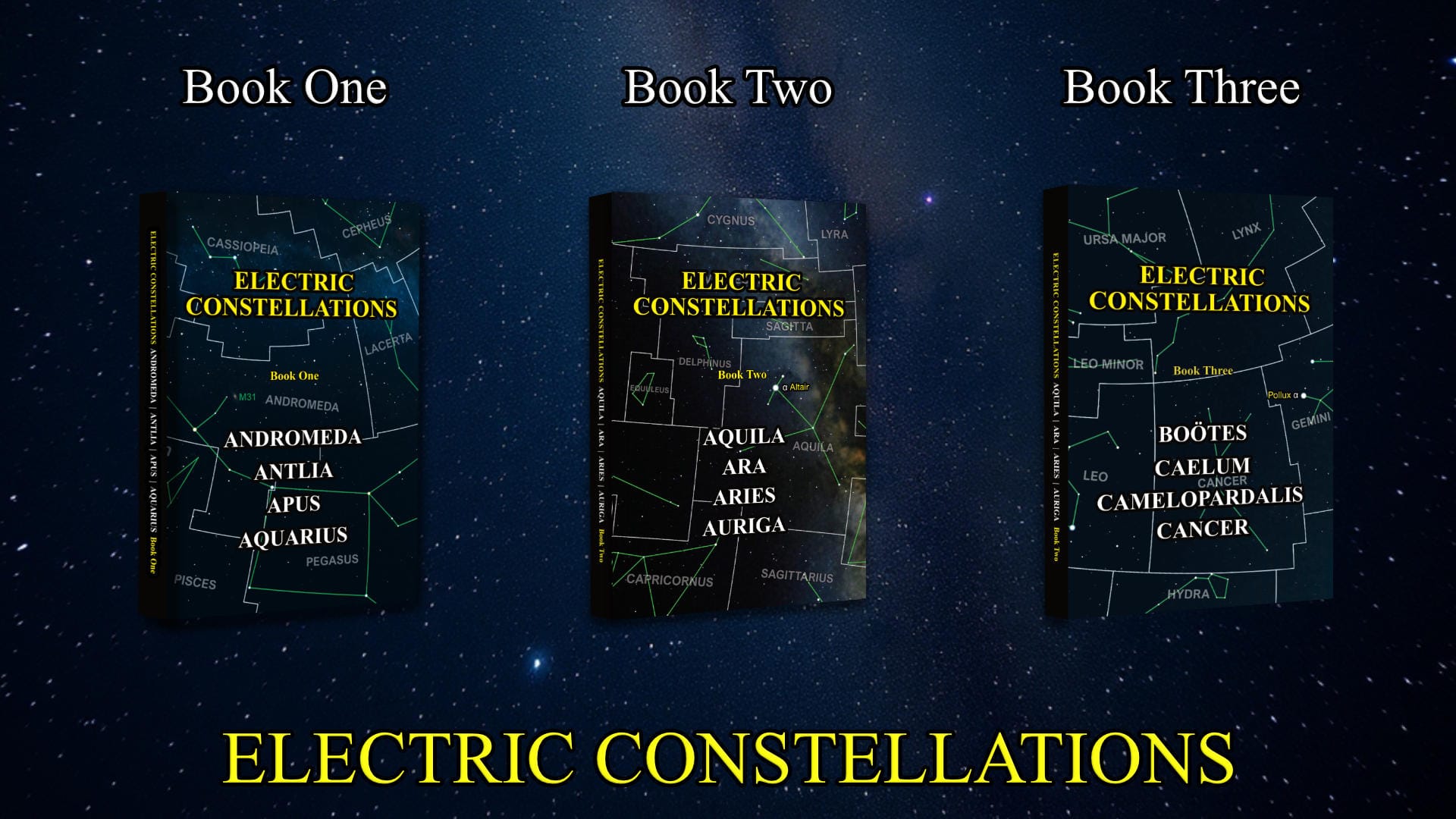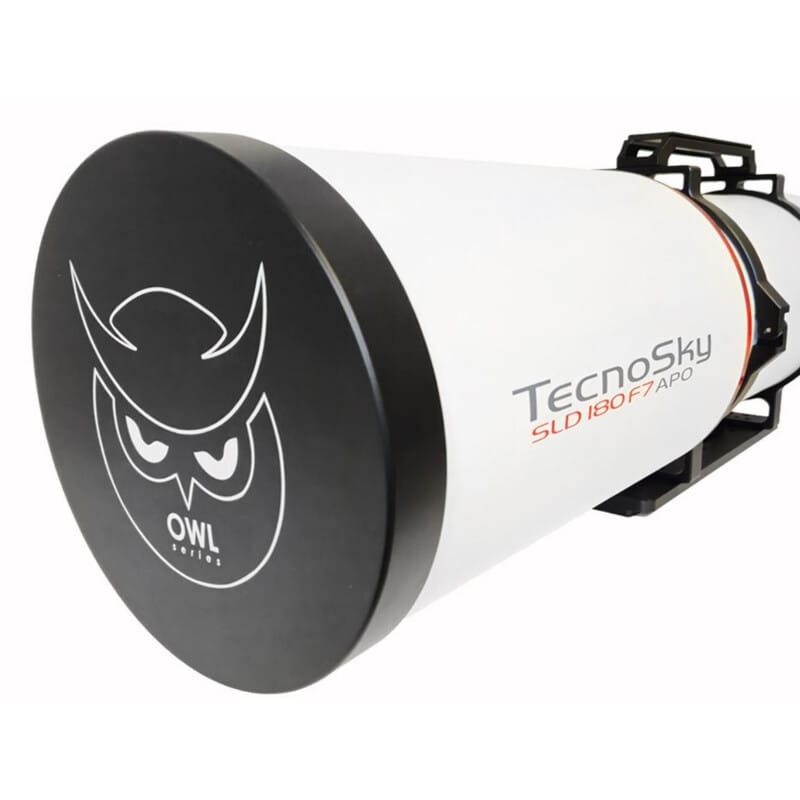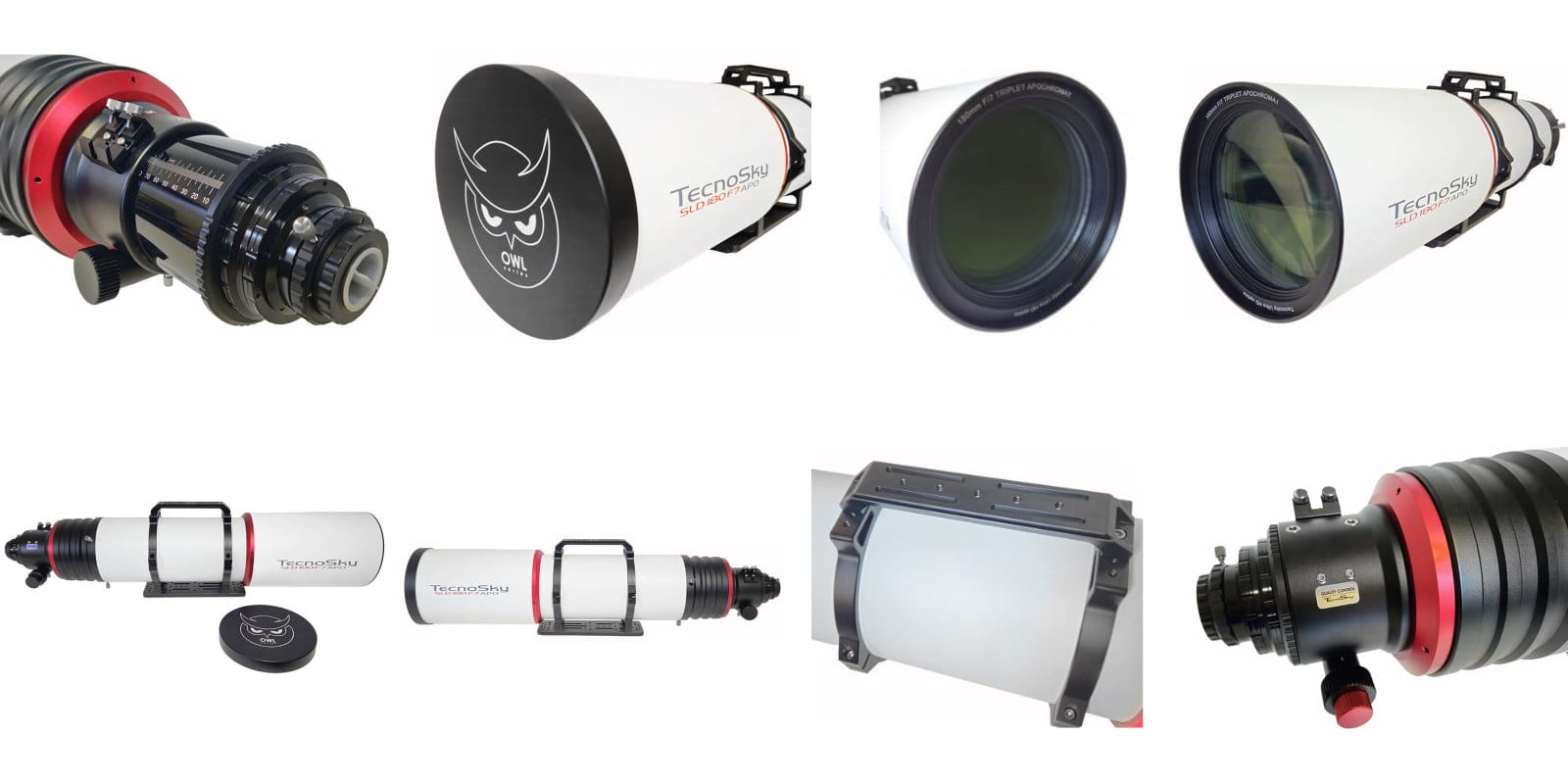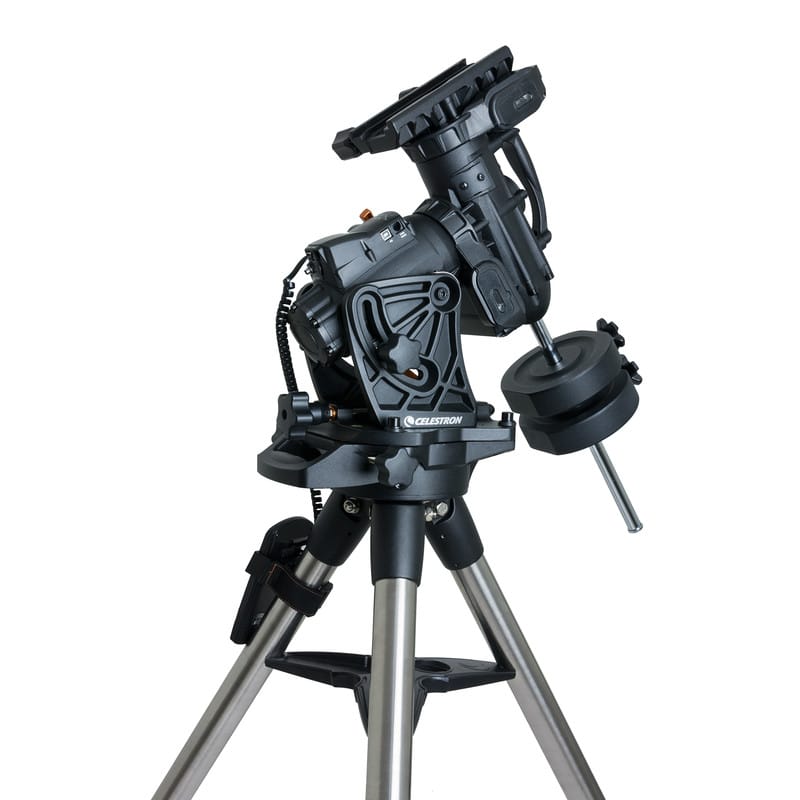TecnoSky AP 180 – Unlock the Pinnacle of Astronomical Excellence
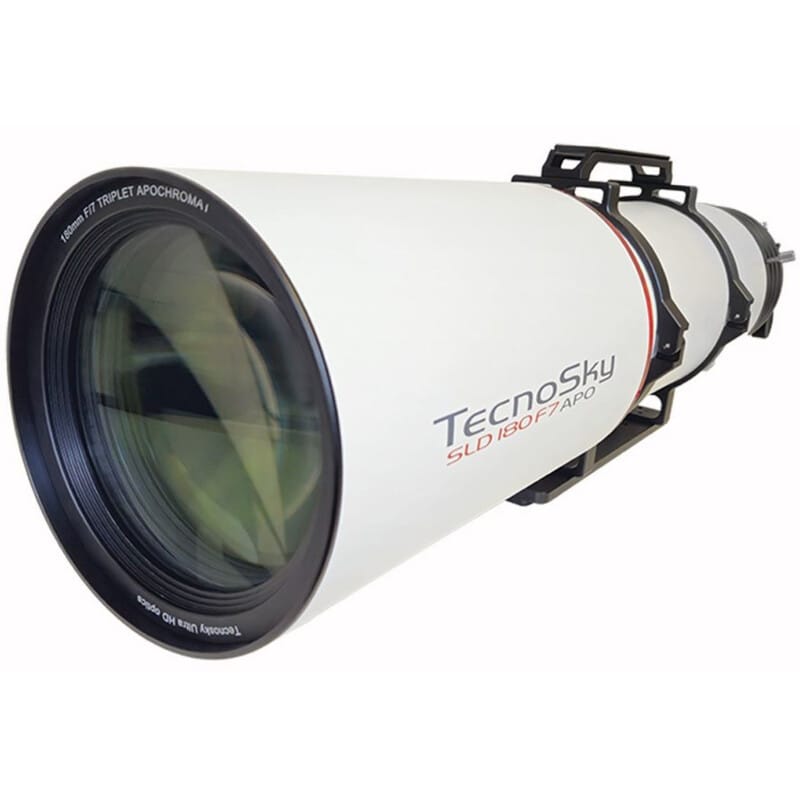
Experience Unrivaled Clarity, Contrast, and Detail – The Professional’s Choice for Visual and Imaging Mastery
If you demand nothing but the best from your astronomical equipment, your search ends here. The TecnoSky AP 180 / 1260 OWL SLD Triplet OTA is not just a telescope—it’s a masterpiece of optical engineering, designed for those who refuse to compromise. Whether you’re an advanced astrophotographer or a dedicated visual observer, this instrument delivers breathtaking performance, precision, and reliability at the highest level.
Why the TecnoSky AP 180 Is the Benchmark for Professional Astronomy
- Massive 7-inch (180mm) Triplet Apochromatic Optics: Capture the Universe with a giant, professional-grade refractor that delivers maximum sharpness and unparalleled contrast.
- HOYA FCD-100 Lenses: Dual FCD-100 elements from Japan’s HOYA guarantee images utterly free of chromatic aberration—true color, every time.
- Interferometric Certification: Each scope includes an optical certificate with a Strehl ratio of at least 0.95, ensuring world-class optical quality.
- Heavy-Duty 4” Focuser: Supports even the heaviest imaging setups with 1:10 fine adjustment for razor-sharp focus, every session.
- Robust, Precision-Engineered Construction: CNC-milled Ergal lens cell, full aluminum tube, internal baffles, and a long retractable dew shield for maximum stability and zero flexure.
- Astrophotography at the Highest Level: With a clear 105mm aperture at the focuser, 330mm-long Losmandy rail, and 95mm backfocus, this TecnoSky AP 180 OTA is ready for any camera, filter wheel, or off-axis guider—no compromises.
Apochromatic Refractors
Apochromatic refractor lenses are designed to minimize chromatic aberration far more effectively than achromatic lenses. An apochromat brings three different wavelengths of light, typically red, green, and blue, into focus at the same point, while also reducing spherical aberration at two of those wavelengths. This is generally achieved with a lens system consisting of two or three elements made from specialized glasses, such as extra-low dispersion (ED) glass or fluorite, rather than simple combinations of crown and flint glass. The TecnoSky AP 180 refractor telescope has a three-element apochromatic objective lens.

Let’s be honest:
If you’re passionate about astronomy, you know the pain of chasing perfection—only to be let down by optical compromises, chromatic aberration, or mechanical instability. You’ve seen the “almost” moments: the faint details lost in planetary belts, the subtle structure in a distant galaxy blurred away, or the star fields that never quite snap into focus.
You want to see the Universe as it truly is—crisp, vibrant, and full of detail. You want your images to pop with contrast, your stars to be pinpoints, and your deep-sky targets to leap from the background with a three-dimensional presence. But most telescopes, even expensive ones, force you to accept trade-offs:
- Color fringing that ruins your planetary shots
- Sagging focusers that can’t handle heavy cameras
- Tube flexure that throws off your guiding
- Mediocre glass that leaves you wondering what you’re missing
And if you’re an advanced observer or imager, you know that every optical flaw, every mechanical shortcoming, is magnified in your results. The difference between “good” and “extraordinary” is the difference between a fleeting hobby and a lifelong passion.
Sound familiar?
You’re not alone. Every serious astronomer has faced these frustrations. The difference is that some choose to break through by investing in a refractor that truly has no compromises.
Imagine missing the fine structure in Jupiter’s belts, the delicate tendrils of a distant nebula, or the razor-sharp separation of a close double star—simply because your equipment wasn’t up to the task. The pain of “almost” is real. But it doesn’t have to be your reality.
Introducing the TecnoSky AP 180 / 1260 OWL SLD Triplet OTA—a professional instrument that sets a new standard for visual and imaging performance.
At the heart of this telescope are two HOYA FCD-100 lenses, the gold standard for apochromatic performance. These Japanese-made elements, combined with a third precision-matched element, banish chromatic aberration for good. Every surface is fully multi-coated (FMC) to maximize light transmission and contrast. The result?
- Pinpoint stars
- Razor-sharp planetary detail
- Deep-sky objects that appear almost three-dimensional
Each TecnoSky AP 180 is individually tested and comes with an optical interferometric certificate, boasting a Strehl ratio of at least 0.95. This means you’re guaranteed a lens set that meets or exceeds the highest professional standards—no guesswork, no compromises, period.
Large, heavy lenses demand a cell that won’t flex, bend, or expand. The CNC-milled Ergal cell ensures perfect alignment and thermal stability, while the lens cell is collimatable for precise optical alignment with the focuser.
The massive 4-inch focuser, with 1:10 fine adjustment and a clear 105mm aperture, is built for the heaviest imaging setups. Whether you’re using a full-frame camera, filter wheel, or off-axis guider, you’ll enjoy rock-solid support and ultra-precise focusing.
The all-aluminum tube features internal baffles for stray light suppression, a long retractable dew shield, and robust tube clamps with a 330mm Losmandy rail. The carrying handle makes transport and mounting a breeze.
With a 95mm backfocus and an extendable extension on linear guides, you can achieve perfect focus with any accessory combination. Add a 0.8x reducer and transform this instrument into a blazing-fast f/5.6 astrograph—without sacrificing the legendary sharpness and contrast of a 180mm triplet.
For lunar, planetary, and double star work, the unobstructed 180mm (7-inch) aperture delivers detail and contrast that mirror telescopes simply can’t match. For deep sky, the high light concentration and optical quality rival much larger instruments.
With two HOYA FCD-100 elements and full multi-coatings, you’ll enjoy images that are utterly free from color fringing, with breathtaking sharpness and contrast. Every star is a pinpoint, every planet reveals subtle structure, and deep-sky objects leap from the background. The FCD-100 lens is an extremely low-dispersion optical glass equivalent to fluorite (CaF2). Relying on technological innovation, HOYA has successfully launched the mass production of high-performance optical glass at the apex of the FCD family. Combining it with optical glass of high refractive index allows the company to achieve unprecedented advanced chromatic aberration correction.
The heavy-duty 4-inch focuser and 105mm clear aperture mean you can use the largest cameras, filter wheels, and guiders—without vignetting or flexure. Achieve perfect focus every time, even with complex imaging trains.
The 180mm aperture gathers 660 times more light than the naked eye, revealing faint galaxies, nebulae, and star clusters in exquisite detail. Add a 0.8x reducer and you have a fast, wide-field astrograph that rivals the best in the world.
The CNC-milled Ergal lens cell and full aluminum tube ensure perfect alignment and zero flexure, even with heavy accessories. Internal baffles and a long dew shield keep your images free from stray light and dew.
Despite its size, the OTA is designed for practical use. The wide Losmandy rail and carrying handle make mounting and transport straightforward, while the robust tube clamps ensure rock-solid stability.
With 95mm of backfocus and an extendable extension, you can use any accessory combination—binoviewers, flatteners, reducers, or advanced imaging setups. The included 1.25-inch and 2-inch eyepiece adapters ensure compatibility with your favorite accessories.
- “The TecnoSky 180 / 1260 OWL SLD Triplet is a revelation. I’ve never seen planetary detail this sharp, and my deep-sky images have a depth and contrast that blows away everything I’ve used before.”
— Dr. Michael L., Professional Astronomer
- “No color fringing, no flexure, no compromises. The focuser handles my full-frame camera and filter wheel with ease. This is the refractor I’ve dreamed of for years.”
— Sophie R., Award-Winning Astrophotographer
- “The Strehl certificate gave me confidence, but the real-world performance is even better. Stars are pinpoints, and the contrast is jaw-dropping. Worth every penny.”
— Carlos M., Astrphotographer
A refractor of this caliber is not mass-produced. Each TecnoSky AP 180 / 1260 OWL SLD Triplet OTA is meticulously crafted, individually tested, and available in extremely limited quantities.
Why act now?
- Strictly Limited Supply: Each unit is hand-assembled and certified, with only a handful available worldwide at any time.
- Unprecedented Demand: As more astronomers discover the difference a true triplet can make, demand continues to outpace supply.
Don’t let hesitation cost you the telescope of your dreams. Order now and join the elite astronomers capturing the Universe in its purest form.
Is this OTA suitable for beginners? The TecnoSky AP 180 / 1260 OWL SLD Triplet OTA is designed for advanced users and observatories. Beginners may find its size and complexity challenging, but experienced astronomers will find it a dream come true.
What kind of mount do I need? This is an optical tube assembly (OTA) only. You’ll need a stable, high-capacity observatory-class mount —preferably with a Losmandy-style saddle—to support the weight and length of the OTA.
Can I use this OTA for astrophotography? Absolutely! The heavy-duty 4-inch focuser, 95mm backfocus, and wide clear aperture make it ideal for advanced astrophotography with large cameras, filter wheels, and off-axis guiders.
What accessories are included? Included are a retractable dew shield, robust tube clamps, a wide Losmandy rail, carrying handle, transport cases, and both 1.25-inch and 2-inch eyepiece adapters. The finder base is compatible with Vixen/Skywatcher.
What objects can I observe or photograph? The OTA excels at lunar, planetary, and double star observation, as well as deep-sky imaging of galaxies, nebulae, and star clusters. Not recommended for solar observation without a proper solar filter.
What makes this refractor superior to mirror telescopes? The unobstructed 180mm aperture delivers unmatched contrast, sharpness, and color fidelity—especially for high-resolution planetary and deep-sky work. No central obstruction means no diffraction spikes or loss of contrast.
Don’t settle for ordinary. Choose the TecnoSky AP 180 and experience the cosmos in unprecedented detail with this light-hungry refractor
A Losmandy-style saddle is the mounting clamp mechanism on a telescope mount that accepts a Losmandy “D-series” dovetail bar (sometimes just called a “Losmandy plate”).
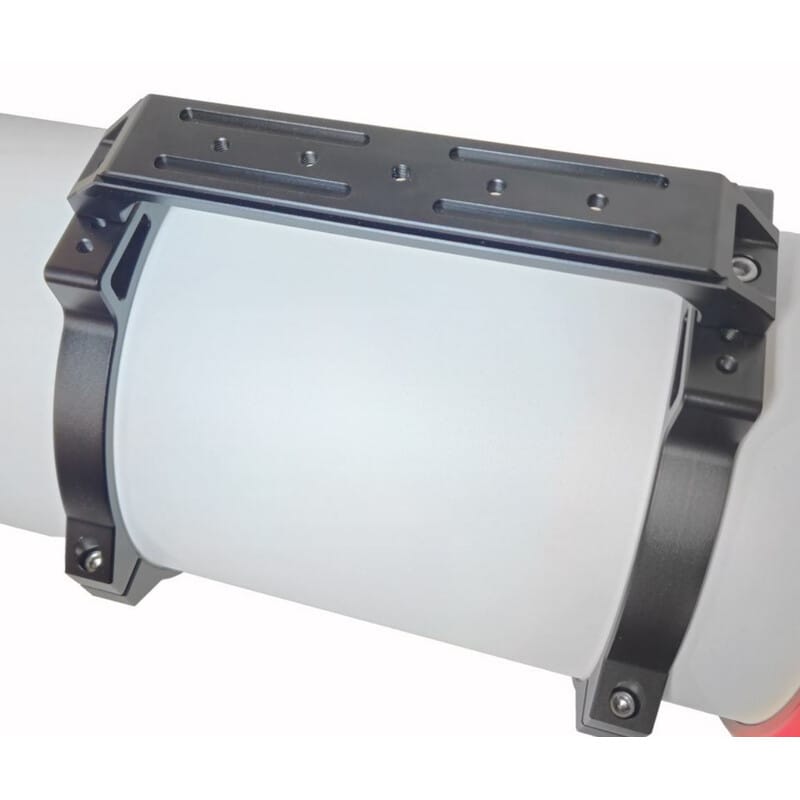
Losmandy-style (D-series) dovetail rail
Dovetail plate (Losmandy D-series)
A telescope optical tube assembly (OTA) is usually attached to the mount via a dovetail plate. The Losmandy D-series dovetail is a wide, sturdy plate, about 4 inches (100 mm) across at the top, tapering slightly to fit into the clamp. It is thicker and more rigid than the narrower Vixen-style dovetail (~1.75 inches / 44 mm wide), which is common on smaller telescopes.
The Saddle
The saddle is the clamping block on the mount head. It has jaws (or clamping screws) that securely grip the dovetail plate. A Losmandy-style saddle is machined to accept the wide D-series plates. Many premium saddles also accept both D-series (Losmandy) and Vixen plates, but a pure Losmandy-style saddle will be dedicated to the wider standard.
Why it’s recommended
The TecnoSky AP 180 / 1260 OWL SLD Triplet is a large, heavy apochromatic refractor (7-inch aperture, 7 ft 3 inches focal length). It is NOT a small telescope. A wide Losmandy plate in a Losmandy-style saddle provides much greater stability, load capacity, and torsional resistance than the narrower Vixen plate. For heavy OTAs, the Losmandy system reduces flexure and vibration, keeping the scope steady for visual observing and astrophotography.
The TecnoSky AP 180 comes with a Losmandy-style (D-series) dovetail rail already bolted underneath. The mount head must therefore have a Losmandy-style saddle (the clamp) to accept the rail securely. If the saddle is Vixen-only (the narrower 44 mm style), the 180’s rail will not fit. Many modern heavy-duty mounts either come with a dual saddle (accepting both Vixen and Losmandy plates) or can be upgraded with a Losmandy-compatible saddle. Once the rail and saddle are matched, the OTA locks in place — stable enough for this large, heavy refractor.
The buyer must ensure that the chosen mount either comes with or is fitted with a Losmandy-style saddle, so that the TecnoSky’s Losmandy rail seats properly. That compatibility is critical for safe, vibration-free mounting.
While official documentation does not spell out a single, specific mount model, the general guidance is to select a mount whose payload capacity is approximately 1.5 times the weight of the OTA. This ensures both stability and precision—crucial for high-quality visual observing and astrophotography.
While comparative mount recommendations from the astronomy community do not refer to this TecnoSky AP 180 model directly, they serve as valid analogues for equipment of similar weight and imaging demands:
- Paramount ME II: Used successfully with a similarly heavy TEC 180FL and imaging equipment.
- Astro Physics 1100 (AP 1100): Reported to handle a TEC 180 EDT plus large-format cameras without difficulty.
Likely Mount Class for the TecnoSky 180 OTA
Given the OTA’s robust design and imaging suitability, one should consider mounts in the mid- to high-capacity equatorial class, particularly those reliable for heavy-duty astrophotography:
- Sky-Watcher AZ-EQ6i (or Atlas Pro AZ-EQ-G): Payload-rated for up to ~25 kg, dual-use (equatorial and alt-azimuth), and with a dual-dovetail saddle—ideal for Losmandy plates.
- Explore Scientific RST-135 or G-11 PMC-8 (Explore Scientific): Both offer strong payload capacity and high tracking performance, with the PMC-8 supporting modern integration tools.
- Celestron CGX-L: A particularly sturdy and refined mount with high payload capacity and mechanical robustness for a large OTA like the TecnoSky AP 180:
To ensure appropriate stability and performance:
- Estimate the OTA's weight, including accessories (e.g., cameras, guiding systems). Multiply by 1.5 to get your required minimum payload.
- Select a mount that meets or exceeds this payload, especially one with a sturdy Losmandy-style saddle.
- For image-centric use, prioritize mounts known for guiding precision and low flexure.
- For combined visual and astrophotographic use, a dual-use mount.
The Strehl ratio is a number between 0 and 1 that compares the actual peak intensity of the telescope’s point spread function (PSF) to the ideal theoretical maximum. In plain language, it tells you how close the optic comes to a perfect diffraction-limited system.
The Strehl ratio is a number between 0 and 1 that compares the actual peak intensity of the telescope’s point spread function (PSF) to the ideal theoretical maximum. In plain language, it tells you how close the optic comes to a perfect diffraction-limited system. Typical ranges:
- 0.80 → the conventional threshold for “diffraction-limited.”
- 0.90 – 0.95 → excellent optics, very little degradation.
- ≥ 0.95 → outstanding quality, essentially indistinguishable from perfection in practical observing.
A Strehl ≥ 0.95 means the TecnoSky 180 AP OTA has nearly perfect optics, with wavefront errors so small that they have a negligible impact on visual or imaging performance.
Manufacturers of premium apochromatic refractors often quote the Strehl ratio (with an official certificate) to:
- Demonstrate optical quality — It reassures buyers that they’re not just getting a large telescope, but one built to very tight optical tolerances.
- Differentiate from mass-market telescopes — Many cheaper refractors are diffraction-limited, but won’t come with such test documentation.
- Appeal to serious astronomers and imagers — At this level, buyers expect quantitative proof of performance, not just marketing claims.
For a 180 mm triplet (a large and expensive refractor), a Strehl of ≥ 0.95 confirms that you’re getting high-end optics suitable for demanding planetary, lunar, and deep-sky imaging.
A Strehl ratio of ≥ 0.95 for the TecnoSky 180 AP translates into what you’ll actually see or capture:
Visual Observing
Planetary detail: At Strehl 0.95+, through the TecnoSky AP 180, fine structures on Jupiter (festoons, small white ovals), Mars (albedo markings, polar cap edge detail), and Saturn (Encke minima in the rings) are visible more sharply and with higher contrast.
Lunar observing: Subtle rilles, crater terraces, and shadow edges appear razor-sharp, with very little light scatter.
Double stars: High Strehl optics cleanly separate very close binaries at the theoretical diffraction limit of 180 mm aperture. The airy disk is compact, and diffraction rings are faint and symmetric, making it easier to split doubles at the Dawes limit.
Astrophotography
High-contrast images: A high Strehl ratio of the TecnoSky AP 180 means that more light is concentrated in the Airy disk rather than scattered into rings. Stars appear as tight, round points across the field.
Planetary imaging: Small-scale features (e.g., Jupiter’s festoons or Saturn’s banding) are preserved better because the optics don’t blur or “wash out” the contrast.
Deep-sky imaging: Stars in long exposures stay sharp, which improves the signal-to-noise ratio in stacked images and enhances detail in faint nebular structures.
Comparison to Lower Strehl Telescopes
Strehl ~0.80 (diffraction-limited): Still usable, but fine planetary contrast is noticeably reduced, and star images show more scattered light.
Strehl 0.90: Very good, but subtle planetary/lunar details can be muted compared to 0.95+.
Strehl ≥ 0.95: Essentially indistinguishable from perfect optics — only atmospheric seeing will be the limiting factor most nights.
For the TecnoSky AP 180 / 1260 OWL triplet, the Strehl certificate isn’t just marketing — it tells you that the scope will deliver top-tier performance. In practice, this means:
- Planets and the Moon will show everything that 180 mm of aperture can show.
- Astrophotography will produce tight stars and high-contrast detail limited mainly by sky conditions, not the telescope.
Here’s why even a 0.95+ Strehl ratio refractor sometimes looks “soft” at the TecnoSky AP 180 eyepiece:
Atmospheric Turbulence
- Earth’s atmosphere is never perfectly steady.
- Hot/cool air layers, wind shear, and jet streams cause the starlight to refract unpredictably as it travels down to your telescope.
- To your eye or camera, this looks like twinkling stars, boiling planetary detail, or blurred lunar features.
- Even if the telescope has a Strehl ratio of 0.95 or 0.99, the atmosphere can reduce the effective Strehl down to something much lower on a poor night.
Aperture and Seeing Scale
- Larger apertures resolve finer detail, but they are also more sensitive to turbulence.
- A 180 mm refractor like the TecnoSky AP 180 has excellent resolving power, but it needs nights of good to excellent seeing to use it fully.
- On average nights, you may find the telescope “out-resolves the atmosphere,” meaning you don’t see all the detail that the Strehl suggests it can deliver.
Practical Observing Limits
- On mediocre nights, even a perfect 180 mm like that of the TecnoSky AP 180 will look “soft” at 200× magnification because the atmosphere is smearing the image.
- On steady nights (when stars hold still and don’t twinkle much), the Strehl 0.95 optics will shine — you’ll see crisp planetary belts, fine lunar rilles, and clean double star splits.
In the Real-World...
- Telescope optics: The TecnoSky AP 180 is about as good as it gets — the 0.95 Strehl guarantees no internal optical limitations.
- Atmosphere: The bottleneck most nights. The quality of seeing will matter more than whether your telescope is Strehl 0.95 vs. 0.99.
- Best practice: Patience and timing. Observe planets when they’re highest in the sky (shortest air path), and try multiple nights. Eventually, you’ll get those magical “perfect seeing” nights where your 180 mm triplet really shows off its potential.
The interferometric certificate proves the TecnoSky AP 180 telescope can perform at the highest level. But in practice, the atmosphere will usually set the limit — except on those rare, steady nights when the Strehl 0.95+ performance becomes obvious.
The Strehl ratio > 0.95 is an important selling point, but it’s not the sole reason the telescope costs in the $20,000 range. This OTA costs so much because:
- It is a 7-inch aperture refractor
- With a 7-inch clear aperture, this is a LARGE refractor telescope
- Refractor telescopes scale in cost very steeply with size: doubling the aperture more than doubles the cost, because lens blanks, cell design, and support structures become exponentially more demanding.
By contrast, 180 mm mirrors are cheap, but producing and mounting a 180 mm precision triplet lens is in another league.
This OTA uses a triplet apochromatic objective with special low-dispersion glass (SLD). Triplets eliminate chromatic aberration almost completely, which is crucial for both high-resolution planetary observing and astrophotography. Grinding, polishing, and aligning three large, precisely figured elements is extremely complex and costly.
The guaranteed Strehl > 0.95 is a major part of the premium pricing. This means each lens set is interferometrically tested and certified. Producing optics that consistently meet this level requires rejecting or refiguring anything less — driving up cost. Many cheaper scopes never provide a Strehl guarantee, because their production tolerances can’t consistently achieve it.
The OTA must hold that heavy triplet precisely aligned. It uses a massive CNC-machined tube, precision focuser (usually 3.5–4-inch), baffling, and collimatable lens cell. This mechanical stability is as important as the optics, especially for astrophotography
Telescopes like this are not mass-produced. They are built in small numbers for advanced amateurs or institutions. Small production runs mean higher per-unit cost, as there are no economies of scale. Mechanical precision and small-scale production → further cost drivers. The Strehl certificate is part of what justifies the premium within this already expensive category, because it reassures the buyer that the scope isn’t just large, but also optically first-class.
So, the $20,000 price comes mainly from the difficulty of making a 180 mm apochromatic triplet at all. The Strehl > 0.95 guarantee is not the sole reason for the cost, but is one of the critical assurances that you are buying a telescope with world-class optical quality — not just a big, heavy piece of glass.
Challenge the standard model—explore the cosmos through the Electric Universe Theory. These Electric Constellations books contain full-color, data-rich investigations of four constellations each. They're not a beginner's star guide—they're a serious work for independent thinkers, astronomers, and scientifically literate readers seeking to understand the Universe beyond conventional gravity-based interpretations.
Each constellation is examined in detail, with attention to its Bayer-designated stars, mythological origins, meteor showers, and bordering constellations. In-depth profiles of deep-sky objects—including galaxies, planetary nebulae, and star clusters—are paired with high-resolution imagery from the Webb and Hubble space telescopes, delivering both scientific clarity and visual impact.
Central to this series is the Electric Universe (EU) model, which proposes that electromagnetic forces—not gravity alone—govern much of the structure and behavior of the cosmos. Rather than treating this as speculative fringe, the book frames the EU model as an evidence-based, plasma-physics-informed alternative to the standard cosmological narrative.
Inside each volume:
- Comprehensive coverage of four distinct constellations
- Analyses of deep-sky objects in the EU context
- Original commentary on plasma discharge features and Z-pinch configurations
- Mythological and historical context without romantic embellishment
Written for readers who demand more than rote repetition of gravitational dogma, Electric Constellations opens a new observational and theoretical frontier—where stars light by electrical currents, not fusion, and where structure emerges from plasma dynamics, not dark matter.
Whether you are an amateur astronomer, electrical engineer, or astrophysicist curious about alternative models, these books deliver a rigorous and visually stunning exploration of the night sky—illuminated by a very different current.
